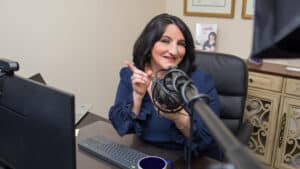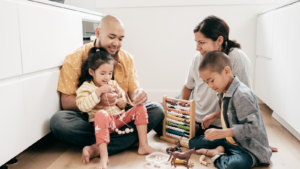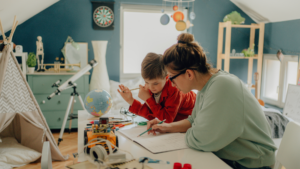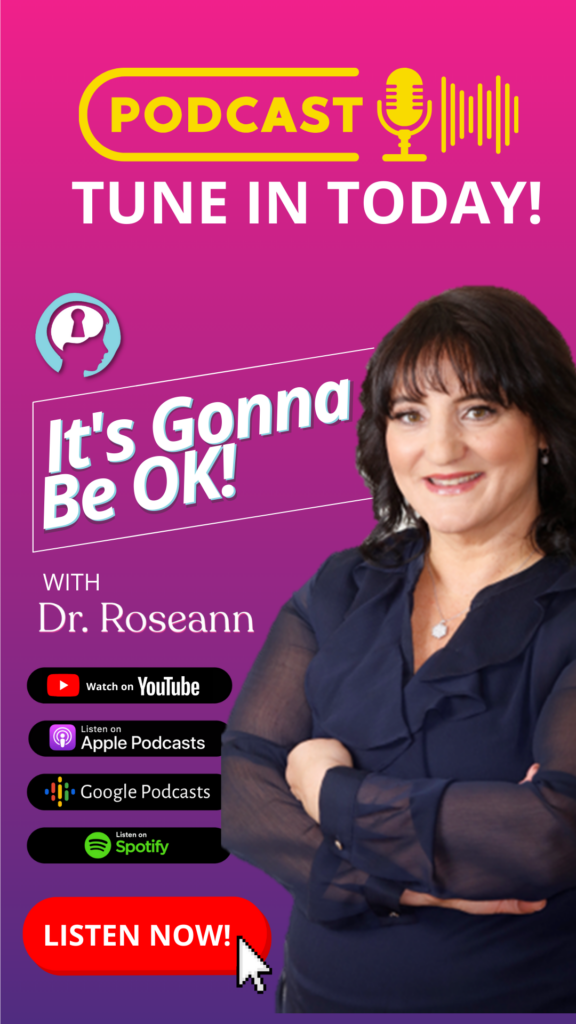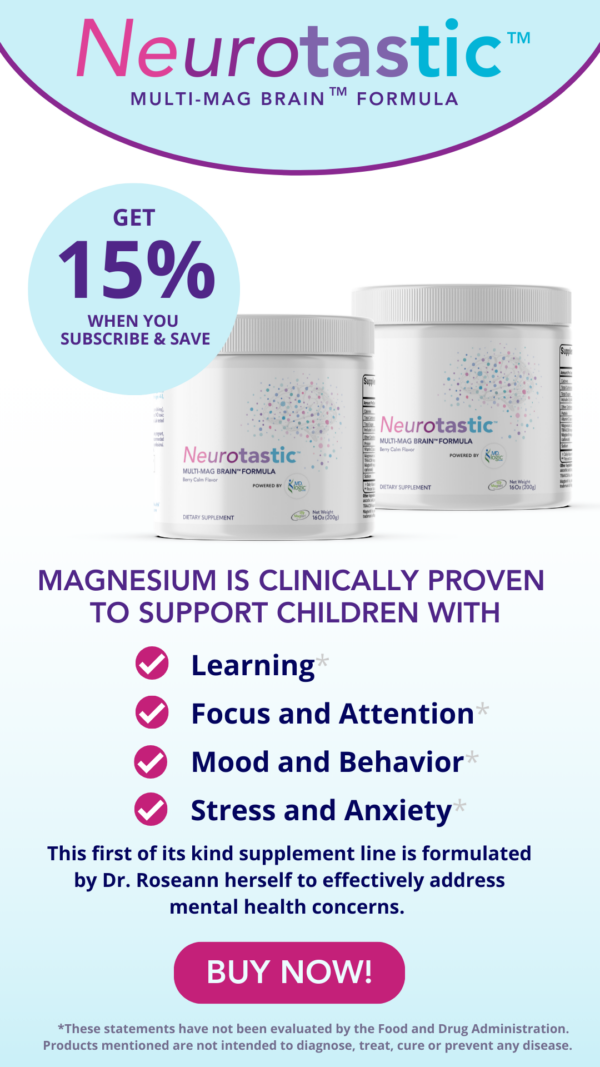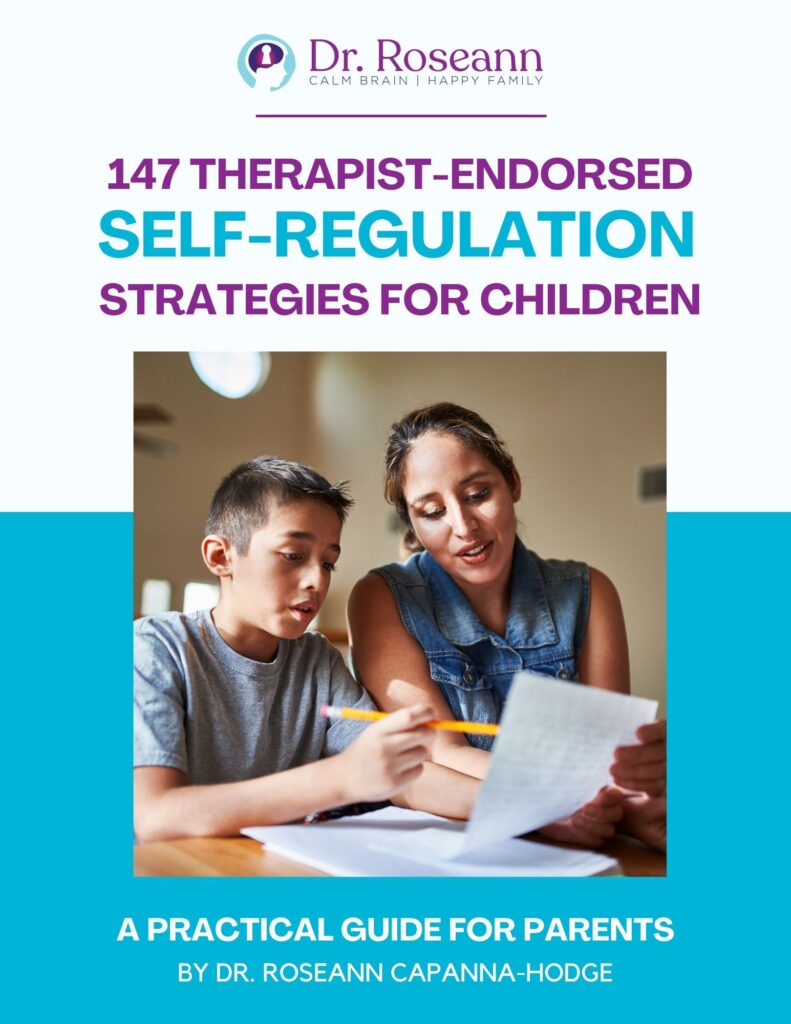Can neurofeedback therapy offer a way to manage anxiety without traditional interventions? Let’s explore the principles and potential implications for addressing anxiety disorders. Learn the science behind this therapeutic approach and how it may redefine our understanding and treatment of anxiety.
When is Anxiety a Problem?
Stress is a normal and natural response to challenges or frustrations that everyone experiences. Some people handle it better than others either due to their dispositions or the issues with which they are dealing. Anxiety, however, interferes with people’s daily functioning because the looping thoughts, feelings, or behavioral symptoms are disproportionate to the real or imagined worry or issue.
Anxiety can hijack the brain and, at times, make it difficult to think or act rationally. The spinning thoughts make it difficult for people to move on from the behaviors and feelings so they spend a lot of time combatting their brains.
What Symptoms Lead to an Anxiety Diagnosis?
Anxiety disorder symptoms look different in children and teens than in adults. Children often display their anxiety or worry behaviorally. For others, it may be more internal, with constant looping thoughts or negative thinking.
The symptoms of anxiety can range from physical symptoms (anxiety stomach aches, anxiety headaches, nausea, vomiting, loose bowels, anxiety hives, etc.) to internal worry (negative talk, social avoidance, etc.) to behaviors (rage, irritability, moodiness, rituals, etc.). One thing is for sure; no two people display anxiety in the same way.
Although everyone feels stressed and gets nervous, people with a clinical issue maintain the same level of anxiety no matter what happens. Symptoms shouldn’t be ignored and the sooner they are addressed, the less likely a child or individual is to habituate to unhealthy behaviors.
What is an Anxiety Disorder?
An Anxiety Disorder is a common mental health issue that occurs when children or adults experience feelings of uneasiness, worry, and fear that are not equal to the situation. According to research, the average age of onset of Anxiety Disorder is now age six (Merikangas et al., 2011).
So, both children and adults can experience clinical anxiety. Anxiety doesn’t always have to be in response to a situation and can develop from intrinsic sources, genetic mutations and heritability, nutrient deficiencies, infectious diseases, and toxic exposures. Additionally, anxiety is often comorbid with other diagnoses. For example, ADHD and anxiety are often diagnosed together.
The Diagnostic and Statistical Manual of Mental Disorders, 5th Edition or the DSM-5 has specific criteria for each of the types of Anxiety Disorders that one must meet to be diagnosed with a clinical issue. A licensed mental health professional or a physician typically diagnoses a child or individual by conducting a clinical interview.
What are the Types of Anxiety Disorders?
Anxiety can present with different behaviors and can also be categorized into seven distinct clinical syndromes. While Obsessive-Compulsive Disorder (OCD) is now a separate category in the DSM-5, it is still considered an anxiety problem.
Generalized Anxiety Disorder (GAD)
Post-Traumatic Stress Disorder (PTSD)
Social Phobia or Social Anxiety Disorder
Obsessive Compulsive Disorder (OCD)
Neurofeedback and Anxiety Disorders Treatment
Neurofeedback offers a unique model for anxiety treatment as it directly engages with the brain's electrical activity. Unlike traditional approaches, neurofeedback provides a personalized, real-time method for individuals to gain control over their neural patterns, potentially fostering long-term improvements in anxiety symptoms.
The most common anxiety treatment is psychotherapy. Psychotherapy, specifically Cognitive Behavioral Therapy (CBT), has been shown through research to be very effective in addressing the symptoms associated with anxiety (Hofmann et al., 2012).
CBT practitioners believe individuals’ perceptions of a situation closely connect to their reaction and work through those misperceptions to bring relief. Helping children and teens address their faulty perceptions and negative thinking can mitigate the effect of anxiety, as well as give them lifelong tools to manage stress.
Psychotherapy is an effective tool not only for the child or individual experiencing anxiety but also for the parent or spouse who is supporting them. Parents benefit from coaching that teaches them to manage their child or teen’s anxious behaviors and feelings.
Moreover, they also benefit from having someone to support their stress, as it isn’t easy parenting an anxious child or teen. When someone is anxious, they can be irritable and irrational at times and the feeling of “walking on eggshells” is a stressful one for the parent and family. Coaching can help people learn appropriate mechanisms for anxiety and how to live with someone who has anxiety.
Other natural treatments for anxiety include:
- Biofeedback Therapy
- BRT/PEMF
- Hypnosis
- Somatic Therapy
- Meditation
- Play and Expressive Arts Therapy
- EFT/Tapping
Why Medication Doesn’t Help Anxiety
Although anxiety medication may temporarily help with anxiety relief, they usually don’t address the root cause, as well as negatively reinforce avoidant behaviors instead of learning how to deal with stress and uncomfortable feelings.
Research consistently supports that psychotherapy, particularly CBT, is more effective in the long term (Eichberger & Desmon, 2014). The investment of time in working with a psychotherapist to address faulty thinking and behaviors results in improved quality of life, increased productivity, and long-term feelings of wellness.
Is Neurofeedback Effective for Anxiety?
Neurofeedback has demonstrated promising effectiveness in addressing anxiety by offering a unique therapeutic approach centered on the brain's electrical activity. Through real-time monitoring and feedback, children can learn to modulate their neural patterns to foster self-regulation.
This personalized method allows for targeted intervention, honing in on specific brain pathways associated with anxiety, and has shown the potential to reduce symptoms and improve overall mental well-being.
Studies exploring the effectiveness of neurofeedback for anxiety have reported positive outcomes, showcasing reductions in anxiety levels and related symptoms. The process involves individuals actively participating in their treatment, gaining insights into their brain's functioning, and developing skills to regulate neural activity.
While further research is warranted to establish the long-term efficacy and compare neurofeedback to established anxiety treatments, the current body of evidence suggests that neurofeedback holds promise as an effective therapeutic tool in the comprehensive management of anxiety disorders (Cheon et al., 2015).
How Does Neurofeedback Help Anxiety?
Neurofeedback is all about teaching the brain to self-regulate. When the Central Nervous System (CNS) becomes dysregulated, a variety of symptoms or behaviors can appear, such as anxiety, depression, memory problems, focus issues, and impulse control problems. With Neurofeedback, you learn to self-regulate, and anxious symptoms are reduced.
Neurofeedback works at the subconscious level, which is controlled 90 to 95% of the time. Through a process of measurement and reinforcement, one learns to regulate their brainwave activity.
Quite simply, one is reinforced for changing brainwaves at a subconscious level through the use of computers. This self-regulation calms the nervous system, reducing or eliminating symptoms.
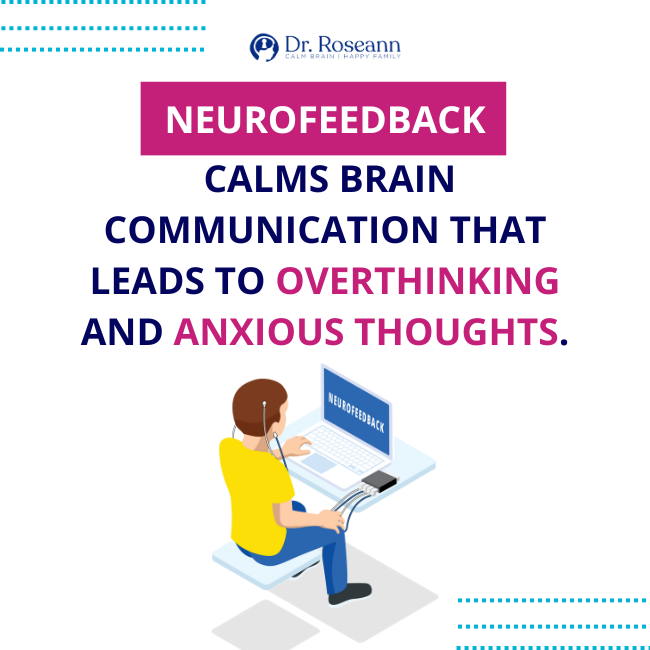
Almost any brain, regardless of its level of function (or dysfunction), can be trained to function better. Research has shown that the long-term effects of neurofeedback are stable over time (Van Doren et al., 2018).
How Many Neurofeedback Sessions for Anxiety?
The number of neurofeedback sessions required for anxiety treatment can vary based on individual factors such as the severity of symptoms, personal response to the therapy, and the specific approach used by the practitioner. Generally, neurofeedback is administered in a series of sessions that can range from 20 to 40 or more, with each session lasting around 30 to 60 minutes.
Some individuals may begin to experience benefits after a few sessions, while others might require more extended treatment plans for sustained improvement. The frequency of sessions can also influence the overall duration of the neurofeedback intervention.
Parents considering neurofeedback for anxiety for their child should discuss their specific needs and expectations with a qualified practitioner who can provide a personalized assessment and recommend an appropriate treatment plan based on their unique circumstances.
Who Does Neurofeedback Therapy?
Neurofeedback therapy is typically administered by licensed and trained healthcare professionals, including psychologists, psychiatrists, neurotherapists, and sometimes other mental health practitioners.
These experts undergo specific training in neurofeedback techniques to ensure proper understanding and application of the therapy. Additionally, some neurofeedback providers may have backgrounds in fields such as biofeedback, neurology, or counseling.
It's crucial for parents seeking neurofeedback therapy to choose a qualified practitioner who is experienced in the application of neurofeedback for the specific condition being addressed, such as anxiety.
Before starting neurofeedback, you may want to verify the credentials and training of the practitioner, inquire about their experience with similar cases, and discuss the proposed treatment plan to ensure it aligns with their needs and goals.
Anxiety and Neurofeedback Protocol
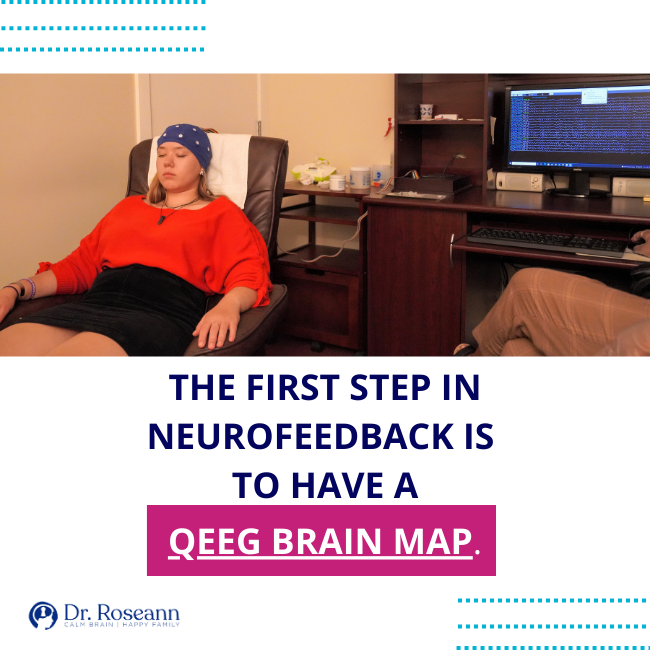
Getting a QEEG is a non-invasive and painless process that involves a cap placed on your head, which has sensors that record the electrical activity of the brain.
After a QEEG brain map, which is a process where EEG activity is recorded and statistically analyzed to see brainwave patterns, a practitioner can see both diagnostic information and design a protocol. In very simple terms, a quantitative EEG is a computer analysis of the EEG data. It is a visual way to see brain functioning in terms of brainwaves.
This EEG data is compared against a reference database of other people’s EEGs. The analysis identifies and highlights variations from the norm (average). For instance, the QEEG report could show any brain areas where there is too much or too little EEG activity compared to the norm. It could also show which areas are not communicating well with other areas.
More specifically, certain brainwave patterns are associated with certain neuropsychological functions and conditions. For example, someone with anxiety may show high levels of beta, a very focused brainwave, but too much activity can make one feel anxious or create an overabundance of inner communication resulting in looping thoughts or negative thinking.
After a customized protocol is designed to address your child’s or your anxiety, Neurofeedback begins. As noted previously, through the use of computers one is reinforced for changing their brainwave activity from a dysregulated pattern to a more healthy pattern.
The computer measures brainwave activity and then reinforces the brain with visual and auditory stimuli, typically a movie playing consistently with a ding for each time a pre-set goal is achieved.
This process is very pleasant, and since the brain craves this simple reinforcement, it typically begins changing within a few seconds of the commencement of the session. Through this process of reinforcement, the brain begins to regulate, and you see symptom reduction.
Most people require two sessions a week and the number of Neurofeedback sessions varies based on the person and particular issue. While some people notice a reduction of symptoms after the first session, most experience a gradual reduction of symptoms over time. Neurofeedback calms the CNS so that a child, teen, or individual with anxiety can learn to manage stress in healthy ways.
There is an extensive body of research that demonstrates the effectiveness of Neurofeedback for those experiencing anxiety (Hammond et al., 2020). For some 45 years, Neurofeedback has been proven effective, with minimal invasiveness and side effects. Combined with psychotherapy, these treatments address the CNS dysregulation and underlying feelings, negative thinking, and behaviors to produce lasting change.
If you are looking to support your own or your child’s anxiety in an effective and research-based manner that is also holistic, then consider Neurofeedback.
Aside from Anxiety, What Can Neurofeedback Treat?
Neurofeedback has been explored as a therapeutic intervention for a range of conditions beyond anxiety. Some of the areas where neurofeedback has been studied or applied include:
- Attention Deficit Hyperactivity Disorder (ADHD)
- Depression
- Post-Traumatic Stress Disorder (PTSD)
- Epilepsy
- Insomnia
- Migraines and Chronic Pain
What to Do When Neurofeedback Does Not Work
If neurofeedback does not yield the expected results, individuals may consider the following steps:
1. Reassess the Treatment Plan
Collaborate with the neurofeedback practitioner to review the treatment plan. Discuss the specific goals, progress, and any challenges encountered during the sessions.
2. Communicate with your Healthcare Provider
Openly communicate with the practitioner about any changes in symptoms or experiences during and after neurofeedback sessions. Sharing this information can help the practitioner make necessary adjustments.
3. Adjust the Protocol
Neurofeedback protocols can be adjusted based on individual responses. The practitioner may modify the frequency, duration, or type of neurofeedback sessions to better address the specific needs of the individual.
4. Explore Complementary Therapies
Consider incorporating other evidence-based therapies or interventions alongside neurofeedback. This could include traditional psychotherapy, medication management, or lifestyle changes that support overall mental well-being.
5. Seek a Second Opinion
Seek a second opinion from another qualified neurofeedback practitioner or a different healthcare professional to obtain a fresh perspective on the situation.
6. Address Underlying Issues
Assess whether there are underlying issues, such as unresolved trauma or co-existing conditions, that may be impacting the effectiveness of neurofeedback. Addressing these issues concurrently may enhance overall treatment outcomes.
7. Practice Patience and Persistence
Neurofeedback, like many therapeutic interventions, may take time to show significant results. Patience is crucial, and it's essential to persist with the treatment plan unless there are clear indications that it is not beneficial.
How to Make Neurofeedback for Anxiety and Depression Work for Your Child
Ensuring the success of neurofeedback for anxiety and depression in a child involves a collaborative effort between parents, the child, and the healthcare professionals involved. Here are some strategies to optimize the effectiveness of neurofeedback for a child:
Choose a Qualified Practitioner
Select a neurofeedback practitioner who specializes in working with children and has experience in treating anxiety and depression in this age group. Verify their credentials, training, and expertise.
Establish Realistic Expectations
Set realistic expectations for the child's progress. Neurofeedback may take time, and improvements can be gradual. Openly communicate with the practitioner about expectations and timelines.
Ensure Comfort and Trust
Create a comfortable and trusting environment for the child during neurofeedback sessions. Establishing a positive rapport with the practitioner is crucial for the child to feel at ease.
Involve the Child in the Process
Depending on the child's age, involve them in discussions about neurofeedback. Explain the process in an age-appropriate manner, emphasizing the potential benefits and addressing any concerns they may have.
Consistent Attendance
Ensure regular and consistent attendance at neurofeedback sessions. Consistency is key for the effectiveness of the therapy, and missed sessions can disrupt progress.
Reinforce Positive Changes
Acknowledge and reinforce positive changes or improvements the child experiences. Celebrate small victories to motivate and encourage ongoing engagement in the neurofeedback process.
Address Concerns Promptly
If any concerns or questions arise during neurofeedback, address them promptly with the practitioner. Clear communication ensures that any necessary adjustments can be made.
Lifestyle Factors
Pay attention to lifestyle factors such as sleep, nutrition, and physical activity, as these can significantly impact a child's overall well-being. A holistic approach can complement neurofeedback therapy.
Parent Action Steps
☐ Find a neurofeedback practitioner specializing in child anxiety and depression
☐ Learn about neurofeedback, explain it to your child, and address any concerns.
☐ Set realistic expectations and understand that improvements may be gradual.
☐ Ensure sessions are in a child-friendly space.
☐ Foster a positive relationship between your child and the practitioner.
☐ Ensure regular attendance at neurofeedback sessions.
☐ Coordinate with healthcare professionals if your child is receiving other treatments.
☐ Keep track of your child's responses and communicate changes promptly.
☐ Acknowledge and celebrate small victories for motivation.
☐ Promptly address any concerns or questions with the practitioner.
☐ Consider lifestyle factors like sleep and nutrition.
☐ Listen to the webinar 3 Natural Solutions for ADHD, Anxiety, and Mood
Citations
Cheon, E.-J., Koo, B.-H., & Choi, J.-H. (2015). The Efficacy of Neurofeedback in Patients with Major Depressive Disorder: An Open Labeled Prospective Study. Applied Psychophysiology and Biofeedback, 41(1), 103–110. https://doi.org/10.1007/s10484-015-9315-8
Eichberger , J., & Desmon, S. (2014, September 25). Talk Therapy – Not Medication – Best for Social Anxiety Disorder, Large Study Finds | Johns Hopkins Bloomberg School of Public Health. Publichealth.jhu.edu. https://publichealth.jhu.edu/2014/talk-therapy-not-medication-best-for-social-anxiety-disorder-large-study-finds
Hammond, D. C., Novian, D. A., & Duffy, F. H. (2020). Comprehensive Bibliography of Neurofeedback Research. ISNR. https://isnr.org/isnr-comprehensive-bibliography
Hofmann, S. G., Asnaani, A., Vonk, I. J. J., Sawyer, A. T., & Fang, A. (2012). The Efficacy of Cognitive Behavioral Therapy: a Review of Meta-Analyses. Cognitive Therapy and Research, 36(5), 427–440. https://doi.org/10.1007/s10608-012-9476-1
Merikangas, K. R., He, J., Burstein, M., Swendsen, J., Avenevoli, S., Case, B., Georgiades, K., Heaton, L., Swanson, S., & Olfson, M. (2011). Service Utilization for Lifetime Mental Disorders in U.S. Adolescents: Results of the National Comorbidity Survey–Adolescent Supplement (NCS-A). Journal of the American Academy of Child & Adolescent Psychiatry, 50(1), 32–45. https://doi.org/10.1016/j.jaac.2010.10.006
Van Doren, J., Arns, M., Heinrich, H., Vollebregt, M. A., Strehl, U., & K. Loo, S. (2018). Sustained effects of neurofeedback in ADHD: a systematic review and meta-analysis. European Child & Adolescent Psychiatry, 28(3), 293–305. https://doi.org/10.1007/s00787-018-1121-4
Are you looking for SOLUTIONS for your struggling child or teen?
Dr. Roseann and her team are all about science-backed solutions, so you are in the right place!
Grab your complimentary copy of
147 Therapist-Endorsed Self-Regulation Strategies for Children: A Practical Guide for Parents
You can get her books for parents and professionals, including: It’s Gonna Be OK™: Proven Ways to Improve Your Child’s Mental Health, Teletherapy Toolkit™ and Brain Under Attack: A Resource For Parents and Caregivers of Children With PANS, PANDAS, and Autoimmune Encephalopathy.
If you are a business or organization that needs proactive guidance to support employee mental health or an organization looking for a brand representative, check out Dr. Roseann’s professional speaking page to see how we can work together.
Dr. Roseann is a Children’s Mental Health Expert and Licensed Therapist who has been featured in/on hundreds of media outlets including The Mel Robbins Show, CBS, NBC, PIX11 NYC, Today, FORBES, CNN, The New York Times, The Washington Post, Business Insider, Women’s Day, Healthline, CNET, Parade Magazine and PARENTS. FORBES called her, “A thought leader in children’s mental health.”
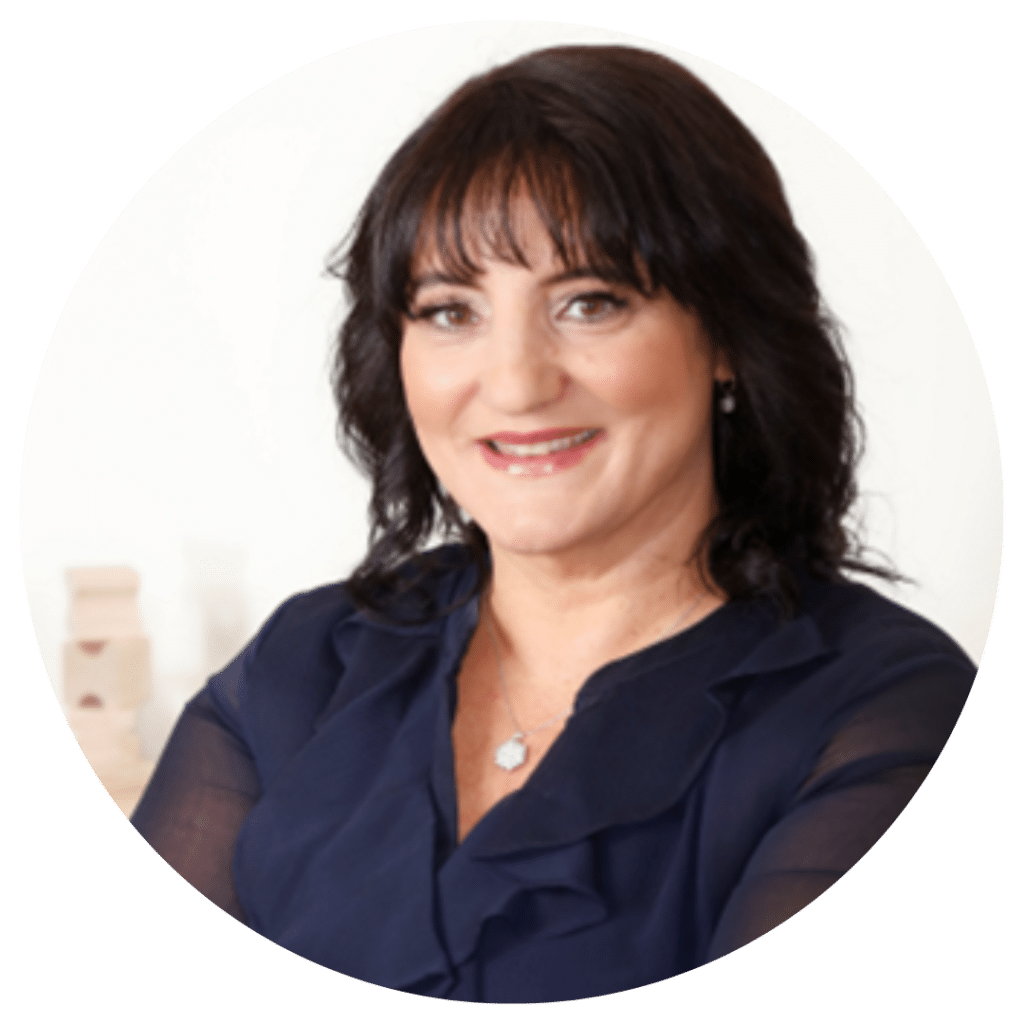
She coined the terms, “Re-entry panic syndrome” and “eco-anxiety” and is a frequent contributor to media on mental health.
Dr. Roseann Capanna-Hodge has three decades of experience in working with children, teens and their families with attention-deficit hyperactivity disorder (ADHD), autism, concussion, dyslexia and learning disability, anxiety, Obsessive Compulsive Disorder (OCD), depression and mood disorder, Lyme Disease, and PANS/PANDAS using science-backed natural mental health solutions such as supplements, magnesium, nutrition, QEEG Brain maps, neurofeedback, PEMF, psychotherapy and other non-medication approaches.
She is the author of three bestselling books, It’s Gonna Be OK!: Proven Ways to Improve Your Child's Mental Health, The Teletherapy Toolkit, and Brain Under Attack. Dr. Roseann is known for offering a message of hope through science-endorsed methods that promote a calm brain.
Her trademarked BrainBehaviorResetⓇ Program and It’s Gonna be OK!Ⓡ Podcast has been a cornerstone for thousands of parents facing mental health, behavioral or neurodevelopmental challenges.
She is the founder and director of The Global Institute of Children’s Mental Health, Neurotastic™Brain Formulas and Dr. Roseann Capanna-Hodge, LLC. Dr. Roseann is a Board Certified Neurofeedback (BCN) Practitioner, a Board Member of the Northeast Region Biofeedback Society (NRBS), Certified Integrative Mental Health Professional (CIMHP) and an Amen Clinic Certified Brain Health Coach. She is also a member of The International Lyme Disease and Associated Disease Society (ILADS), The American Psychological Association (APA), Anxiety and Depression Association of America (ADAA) National Association of School Psychologists (NASP), International OCD Foundation (IOCDF).
© Roseann-Capanna-Hodge, LLC 2023




